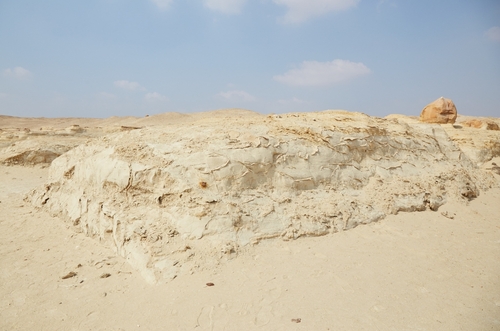Notre Dame cathedral is being restored
Shutterstock/Jerome Labouyrie
When a fire destroyed the Notre Dame Cathedral’s famous spire and most of the roof in 2019, the immediate damage and subsequent renovation efforts unexpectedly revealed large iron staples holding together many of the building’s stone blocks. Analysis has now shown that Notre Dame was the first Gothic cathedral to use such iron reinforcement throughout its structure – a fact that highlights the iconic building as a high-tech, modern marvel of its time.
“You realise they were doing things that were like the Empire State Building around 1930, or like the Burj Khalifa in Dubai – really extraordinary stuff for the time,” says Robert Bork at the University of Iowa, who was not involved in the analysis. “You can compare it to the moonshot in the 1960s, and you can compare it to some of the big high-tech initiatives now.”
Notre Dame was the tallest building ever constructed when the project first began in medieval Paris during the 1160s. Examination of the cathedral during its ongoing renovation has allowed Maxime L’Héritier at Paris 8 University Vincennes-Saint-Denis in France and his colleagues to estimate that the building has thousands of staples from the floors to the upper walls.
“The fact that the framework burned made some staples that could not be visible before appear to us,” says L’Héritier. He described each staple as being about 50 centimetres long and weighing between 2 and 4 kilograms.
Closer analysis of 12 staples showed that they were used in the earliest stages of the cathedral’s construction, according to the researchers. They performed a radiocarbon dating analysis on material samples taken from the staples – each sample being an alloy of carbon and iron – by dissolving the iron to leave behind the carbon that originated from charcoal used in the medieval ironworking furnaces.
The use of iron to reinforce the building’s stones and other features – such as the stained glass window’s iron connections – was key in creating the cathedral’s Gothic style of architecture, says Bork. Unlike the blockier stone architecture of Roman times, medieval builders of Gothic architecture took advantage of such iron innovation to create structures that appear lighter and much more detailed.
“Compared to other cathedrals, such as Reims, the structure of Notre Dame in Paris is light and elegant,” says Jennifer Feltman at the University of Alabama, who was not involved in the analysis. “This study confirms that use of iron made this lighter structure at Paris possible and thus the use of this material was crucial to the design of the first Gothic architect of Notre Dame.”
The team has also begun comparing the elemental composition of different iron staples to see if the iron was produced at specific ironworking sites – many sites having been within a day’s walk of Paris, says L’Héritier. This archaeological sleuthing process involves using lasers to pulverise the iron samples so that they can undergo analysis by a mass spectrometer, which allows for the chemical signature comparison.
Analysis of the iron staples’ current strength will even provide modern architects with information on how to reuse undamaged iron staples in rebuilding the Notre Dame Cathedral to its former glory. “Now it’s not diagnosis time – it’s restoration time,” says L’Héritier.
Topics:














